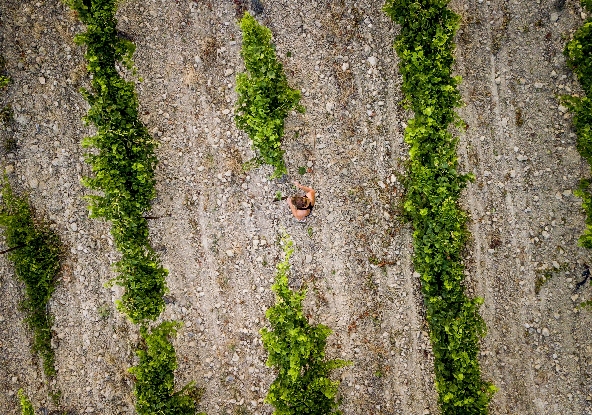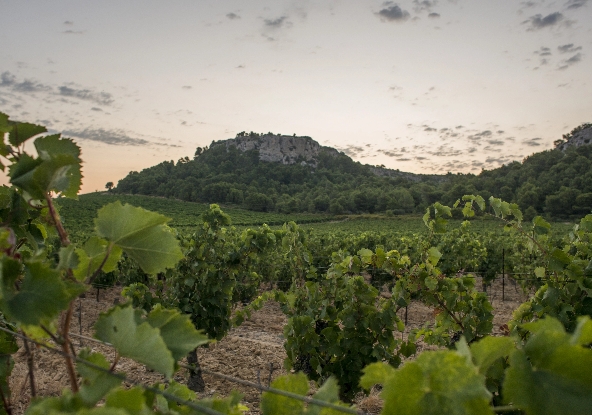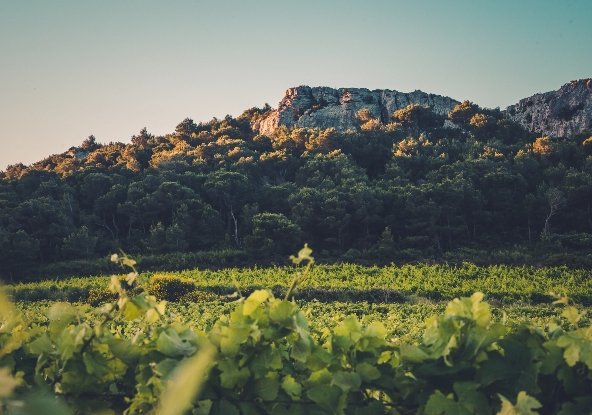


A favourable climate favourable for the cultivation of vines
The vineyard takes advantage of a Mediterranean climate with warm, sunny days. At night, the altitude and the nearby sea bring coolness. Thus, the bunches of grapes ripen more slowly to produce a high-quality juice.
An amazingly rich terroir
The several geological changes related to the differences in altitude and exposure give our terroir several expressions. Dating from the Cretaceous age, the soils are mainly made up of local marls and marl-limestone mixed with the products of the erosion of the limestone plateau that overlooks them.


Since Roman times, the vineyard has taken root at the foot of the Clape massif
The origin of the existence of the vineyard on the Massif de la Clape dates back to Roman times. As a result of the phylloxera which destroyed the vines at the end of the 19th century, they became grazing land for sheep for several decades. It is from 1980 that enthusiast winegrowers decided to replant the vineyard, giving rise to Château de Figuières, referring to the fig, that fleshy and succulent fruit.